- Home
- Deborah Harkness
The World of All Souls Page 28
The World of All Souls Read online
Page 28
Basilica di Sant’Apollinare, Via Romea Sud, 224, 48124 Classe RA, Italy
Sept-Tours
In the center of rolling hills was a flattened peak dominated by a crenellated hunk of buff and rose stone. Seven smaller towers surrounded it, and a turreted gatehouse stood guard in front. This was not a pretty fairy-tale castle made for moonlit balls. Sept-Tours was a fortress.
Philippe established Sept-Tours (Seven Towers), the family seat of the de Clermonts, when the Roman Empire fell apart. It is the center from which the family’s power maneuverings throughout the world are carried out, as well as the base for the Knights of Lazarus. This isn’t a cozy family home but a working household of ancient beauty and formidable strength.
Sept-Tours was modeled after Château Dauphin in Pontgibaud, right down to the decorations in the great hall, salon, and breakfast room. This twelfth-century castle is the latest in a series of residences built on the site that date back to A.D. 400. Like the other castles in the Auvergne, Dauphin has seen its share of warfare, changing hands through the Hundred Years’ War between England and France, besieged during the French Wars of Religion, and captured by a Huguenot captain who reportedly locked the defenders in their own dungeons.
Château Dauphin, 63230 Pontgibaud
Sept-Tours floor plan
Les Revenants
Les Revenants was smaller than Sept-Tours, but not by much. There were only four towers, Matthew pointed out, one on each corner of the square keep. But the moat that surrounded it was large enough to qualify as a lake, and the splendid stable complex and beautiful interior courtyard rather took away from any claims that this was more modest than the official de Clermont residence.
Les Revenants, a place Philippe de Clermont originally built to house returning Crusaders, is Diana and Matthew’s haven near Limousin. There they were able to enjoy a brief period of private calm when the twins were first born, and it later became a gathering place for their new Bishop-Clairmont scion. A gift from Ysabeau, Les Revenants is cozy by her standards, with doors that assured privacy in every room, and modern conveniences like an elevator. This de Clermont residence is based, inside and out, on the impressive Château de Montbrun. A renovated medieval castle on the edge of the Limousin region, it was originally built by a returning Crusader in 1179, Aymeric Bruni (Brun), with alterations dating back to the fifteenth century and restoration work undertaken during the nineteenth century. You can imagine Diana and Matthew studying within its wood-paneled library under atmospheric lighting.
Inside, however, there was an intimate feeling to the place, in spite of its large public rooms on the ground floor. Though the castle had been built in the twelfth century, it had been thoroughly renovated and was now fully updated with modern conveniences such as bathrooms, electricity, and even heat in some of the rooms. Despite all that, I was just winding myself up to reject the gift and any idea that we would ever live here when my clever husband showed me the library.
Château de Montbrun, 87230 Dournazac
Spain
Archivo General de Indias, Sevilla
Few scholars had reason to poke through the bizarre range of books and objects the Gonçalves had collected over the years. Most researchers were down the street at the Archivo General de Indias, arguing about Columbus.
This repository in Seville, dating back to the end of the sixteenth century, is a treasure trove of valuable documents archiving the history of Spain’s colonial past and explorations in the Americas, including Christopher Columbus’s journal.
Avenida de la Constitución, 41004 Sevilla
Madison, New York, USA
This small town in upstate New York is the home of Sarah Bishop and Emily Mather and the place where the two women raised Diana Bishop after the death of her parents in 1983. It is one of the former agricultural and light-industrial centers of nineteenth-century America, where today hardscrabble farms and tiny villages struggle to survive as children flee to cities because the jobs have all gone elsewhere. The area was settled by New England migrants in the late eighteenth and early nineteenth centuries and has some characteristics of New England architecture, with clapboard buildings, picket fences, and rambling (usually empty) barns. With the Bishop family dating back to the earliest settlers, it is home to one of the most powerful dynasties of witches.
The Bishop House
We turned down the rutted road leading to the Bishop house. Its late eighteenth-century lines were boxy and generous, and it sat back from the road on a little knoll, surrounded by aged apple trees and lilac bushes.
The Bishop house, located in Madison, was built by witches fleeing eastern Massachusetts and the persistent memories of Salem. The Bishops moved there after the American Revolution, when the new government was encouraging settlement on the frontier. Many colonizers to upstate New York came from western Massachusetts, and they built farmhouses that looked like those they had grown up in.
The witches who constructed the house used spells as well as hammers and nails. As a result it has the ability to grow and shrink to accommodate the family and its houseguests. It has hidden storage chambers and removes items only to return them when needed. Sometimes the house’s idea of “need” does not correspond with that of the owner of the missing objects, be those items socks, lost grimoires, turkey platters, craft projects, Halloween decorations, bottles of wine, or errant pieces of mail. The house is also inhabited by the Bishop ghosts, who migrated from Salem to Madison with the family in 1790.
See also: DECORATIVE ARTS: The Keeping Room
The inspiration for the Bishop house was actually a house one of my grandfathers built in western Massachusetts in the eighteenth century. It’s still standing: a big white house on Harkness Road in Pelham called the Harkness House! A similar house, inside and out, is on Shutesbury Road, in Pelham, Massachusetts. I also spent a few happy years in upstate New York when I was teaching at Colgate in Hamilton and the Bishop house is partly modeled on my house there, too. It didn’t grow rooms, but it did creak and sigh. . . .
Forest of Madison and the Ancient Stag-Headed Oak
Above me the branches of the tree were cracked and withered. Bare limbs forked and forked again into shapes reminiscent of a stag’s horns.
Diana and Matthew were forced to confront the unhinged Juliette Durand in the shadowed forests surrounding the Bishop house at the end of A Discovery of Witches. As Matthew lay dying after his confrontation with Juliette, Diana made a deal with the goddess and used the life force of an old oak to save the man she loved.
To follow the All Souls walking tour of London, go to videos for fans on deborahharkness.com.
London, England
Like Oxford, London is steeped in memory and magic, and the juxtaposition of ancient and modern is ever present in this setting. Diana and Matthew have shared two Londons: the first the Elizabethan “Square Mile” within and just outside the early Roman walls, known as the City; the second the more expansive, modern metropolis. This multilayered combination of worlds is embodied in areas such as the Barbican: The medieval church of St. Giles Cripplegate, near the crumbling Roman wall of the Old City, is set within the present-day arts precinct. It is a world within a world, at once Roman, medieval, and current, the ancient and magical hiding in plain sight, nestled within a modern frame.
Creatures of every group are woven into the fabric of the city and have organized themselves into alliances often according to their location. The witches’ gatherings and Redes span the city in connection with the delineation of different parishes, while vampires within the Square Mile of the City answer to the vampire king of London, Andrew Hubbard, as do the daemons and witches caught in his family.
The City of Elizabethan London
“It looks like a demented hedgehog,” I observed. The London skyline was filled with needlelike spires that stuck up from the huddle of buildings that surrounded them.
&nb
sp; This detail from a London panorama by Visscher in 1616 shows the London that Diana would have seen in 1590 with St. Paul’s Cathedral, Baynard’s castle on the river to its left, and Blackfriars to the left of Baynard’s castle.
London in 1590 was limited to the Square Mile of the City proper and its near surrounding suburbs. Covent Garden was open fields, and there was nothing but houses between the Inns of Court and Westminster. Remnants of the Roman wall still surrounded it. That said, the Square Mile is far less crowded now than it would have been in the Elizabethan period, when Matthew introduced Diana to the London he knew. By 1600 it’s estimated that nearly two hundred thousand people lived in that Square Mile, which included people of many nationalities speaking dozens of different languages. There were even foreign-language schools and churches in the City, so it was very cosmopolitan. Its boundaries today are roughly the same, marked by the red-and-white standards signifying where the City ends and the rest of London begins.
One of the things I’ve enjoyed most about writing the All Souls trilogy was the chance to bring late sixteenth-century London—the London I spent more than fifteen years researching as a scholar—to life for my readers. I know a lot about the city during the reign of Elizabeth. Not everything, but a lot. Some of it made its way into my history books and articles, but not all of it. My challenge in Shadow of Night was to paint a portrait of the city that was as round and real and three-dimensional as possible. It was all the more important to me because the Elizabethan city is barely perceptible in modern London. Much of what Diana and Matthew would have known was destroyed by fire in 1666 or by bombs in World War II. I did what I could to reconstruct it with words and hoped readers’ imaginations would fill in the rest.
Blackfriars
When Matthew turned us toward the City, I looked up. There was St. Paul’s. “I’m not likely to get lost with that in the neighborhood,” I murmured.
As we made our slow progress toward the cathedral, my senses grew accustomed to the chaos and it was possible to pick out individual sounds, smells, and sights. Bread baking. Coal fires. Wood smoke. Fermentation. Freshly washed garbage, courtesy of yesterday’s rains. Wet wool.
Diana and Matthew lived in a neighborhood called Blackfriars. It takes its name from the Dominican friars who set up their priory in the area between the Thames and Ludgate Hill in 1276. Very little remains of the once-vast ecclesiastical complex that stood south of Ludgate, but tucked into the maze of narrow medieval streets near St. Paul’s you can find some traces of the graveyard and the churchyard.
St. Paul’s Cathedral
"What is that?" I gasped, pointing to a vast expanse of stone pierced by tall windows. High above the wooden roof was a charred, stout stump that made the building’s proportions look all wrong.
“St Paul’s,” Matthew explained. This was not Christopher Wren’s graceful white-domed masterpiece, its bulk concealed until the last moment by modern office blocks. Old St. Paul’s, perched on London’s highest hill, was seen all at once.
“Lightning struck the spire, and the wood of the roof caught fire. The English believe it was a miracle the entire cathedral didn’t burn to the ground.”
Wren’s domed masterpiece marks the spot atop Ludgate Hill where once a great medieval cathedral stood. The “Old St. Paul’s” that Diana saw was in fact the fourth incarnation of the cathedral, which was started by the Normans in the eleventh century. Following the English Reformation in the early sixteenth century, the building became run down, and many sites in the churchyard were sold off to printers and booksellers (who had already congregated in this area of London). This also meant that St. Paul’s Churchyard was a vibrant center of learning in the City, where pamphlets and books were circulated, the latest news and gossip exchanged, and rigorous sermons from Protestant preachers heard. When the spire was struck by lightning in 1561, leaving a blackened stump, the Protestants and Catholics blamed each other for incurring God’s anger. The medieval structure was finally destroyed in the Great Fire of 1666 and rebuilt by Christopher Wren to become the iconic building that survives today. The bookshops that surrounded the cathedral are long gone, but if you look down while you walk in the precincts, you might be able to find the stone that marks the spot where Diana heard a sermon preached at St. Paul’s Cross.
St. Paul’s Churchyard, London EC4M 8AD
The Hart and Crown
The building was half-timbered, like most on the street. A vaulted passage spanned two arrays of windows. . . . The passage emptied out into the building’s interior courtyard—a luxury in a city as densely packed as London. The courtyard boasted another rare amenity: a well that provided clean water to the residents of the complex. Someone had taken advantage of the courtyard’s southern exposure by tearing up the old paving stones to plant a garden, and now its neat, empty beds patiently awaited spring.
The Hart and Crown, the residence in which Diana and Matthew had rooms in Tudor London, was on Water Lane in Blackfriars. In a city as cramped as London was at that time, they were lucky to have the spacious apartment they did, including the hidden archive room that Matthew revealed to Diana, decorated with strange hanging files filled with de Clermont family secrets. Water Lane would have been a bustling, narrow street, with creaking signs on each dwelling denoting the services for sale in the wide array of shops. The Hawleys, a shoemaker and his wife with whom Diana and Matthew shared the building, appear in the historical records of the period, living and working in Blackfriars, and the building’s complex was a community within a community. With so little remaining of the old Elizabethan city today, Water Lane has long since been renamed and built over. To imagine what the Hart and Crown might have been like, you can look at Staple Inn (situated in Holborn, northwest of Blackfriars), built in 1585. This is one of the few remaining Tudor buildings that has survived fire and war and has the same timber-framed façade and inner courtyard that the Hart and Crown would have had.
Staple Inn, London WC1V 7QJ
Belle Savage Inn
Matthew treated me to dinner at the famous Belle Savage Inn just outside Blackfriars on Ludgate Hill. More than a simple eatery, the Belle Savage was an entertainment complex where customers could see plays and fencing matches—not to mention Marocco, the famous horse that could pick virgins out of the crowd.
Records show that the Belle Savage Inn existed as far back as the beginning of the fifteenth century, and by 1590 it had developed into the entertainment complex that Diana visited with Matthew. Marocco, also known as Bankes’s Horse after his trainer, William Bankes, was a popular London attraction for the Elizabethan audiences. Born around 1586, the famous horse worked the London inns and traveled throughout the country, even into Scotland, until his death around 1606. Marocco was known for being able to walk on two legs and play dead, and he was sometimes called the politic horse because he would bow when the queen’s name was mentioned and bare his teeth and chase his master offstage if the name of the Spanish king, Philip II, was uttered. And yes, one of his most applauded acts was picking out the virgins in the crowd of onlookers.
A contemporary image of Bankes and Marocco performing their act
Playhouse Yard
It took me only a few steps to reach a narrow cobbled street that used to lead to the inner precincts of the old Blackfriars Priory. I frowned and pointed. “Wasn’t the Cardinal’s Hat in there?” It was one of Kit Marlowe’s watering holes.
“Good memory, Auntie. They call it Playhouse Yard now.” Our house had backed up to that part of the former monastery.
A plaque on the wall explains that this small, paved area in the heart of the City might have been the site of one of London’s first public playhouses. It is here, and in the surrounding streets, where Diana remembered her Elizabethan experiences in the City, conjuring the long-lost Tudor houses and doorways as she met up with a member of the contemporary London witches’ gathering.
Playhou
se Yard, London EC4V 5EX
Baynard’s Castle
Matthew nodded and directed my attention down the street. “And that is Baynard’s Castle.” It was the largest building I had seen yet except for the tower, St. Paul’s, and the distant prospect of Westminster Abbey. Three crenellated towers faced the river, linked by walls that were easily twice the height of any of the nearby houses.
Like so much of the Elizabethan city, Baynard’s Castle is now nothing more than a sign on the corner of a busy intersection near the Blackfriars underground station. It is worth seeing if only to realize that once upon a time this was riverfront property! Taking its name from the original castle built by Ralph Baynard (who came to England with William the Conqueror), it was rebuilt by Henry VII in 1428. Henry VIII gave it to Catherine of Aragon, and on Henry’s death it passed to the Pembroke family, who used it as their lavish London residence. Diana passed many happy hours with Mary Sidney at the castle, where one of the tower rooms had been converted into Mary’s personal alchemical laboratory. Sadly, the castle was destroyed in the Great Fire of 1666, with the remaining ruins finally disappearing in the nineteenth century.
Enlarged detail of the 1650 Merian panorama of London picturing Baynard’s Castle on the riverfront

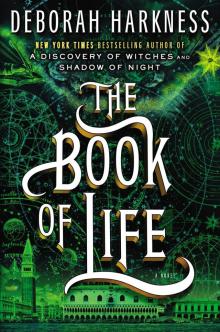 The Book of Life
The Book of Life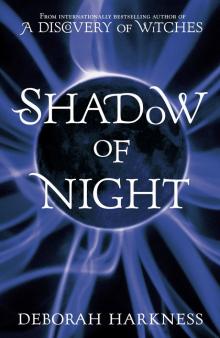 Shadow of Night
Shadow of Night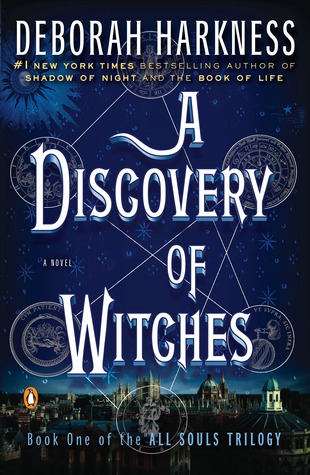 A Discovery of Witches
A Discovery of Witches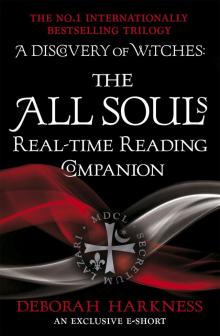 The All Souls Real-Time Reading Companion
The All Souls Real-Time Reading Companion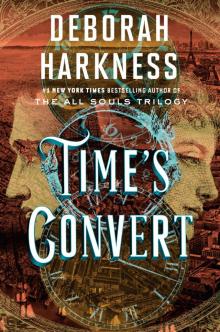 Time's Convert
Time's Convert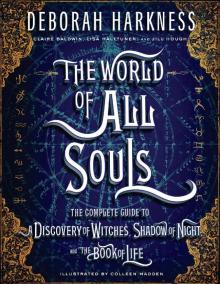 The World of All Souls
The World of All Souls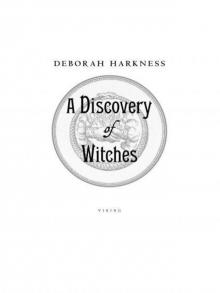 A Discovery of Witches: A Novel (All Souls Trilogy)
A Discovery of Witches: A Novel (All Souls Trilogy) Shadow of Night: A Novel
Shadow of Night: A Novel